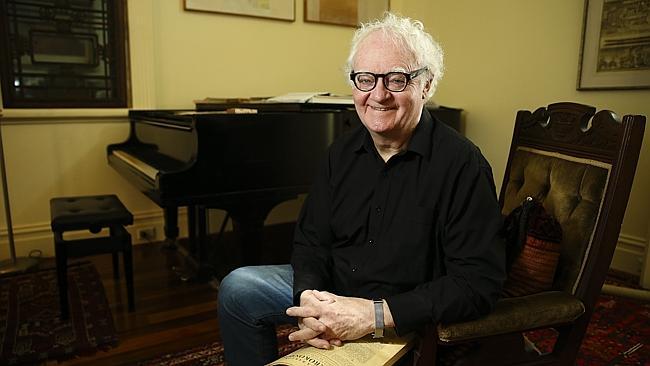Richard Gill, Ken Robinson argue for more classroom creativity
Can the creative impetus inherent in the arts help to foster a culture of innovation in the wider economy?

People speak of imagination, creativity and innovation as skills that are essential to the creative industries and the wider knowledge economy. Lately, though, there’s a tendency to use these terms indiscriminately, with the risk that the special skills they describe will be misunderstood and undervalued.
Music educator Richard Gill, recognised yesterday in the Queen’s birthday honours, highlights the problem. His complaint is the obsession in some schools with National Assessment Program — Literacy and Numeracy scores, and with the emphasis on teaching literacy and numeracy at the expense of a more rounded education. “Literacy and numeracy are not subjects, they are conditions or states which one arrives at as a result of being able to read or to count,” he says.
Gill has long championed music education in schools: not only because music is a wonderful thing in itself, but also because it encourages children to develop the mental processes that contribute to a creative mindset.
Like numeracy and literacy, creativity is not a subject that is taught, although it is sometimes described that way. Instead, it is a set of skills that are developed by the mind’s application to an activity, such as drawing, writing a story, or playing a musical instrument. Children learn to be creative by doing things with images, words and sounds.
The British education expert Ken Robinson is terrific at drawing the distinction between the different mental processes that comprise creativity. He is the author of several books including Out of Our Minds: Learning to Be Creative, and his 2006 TED talk Do Schools Kill Creativity? is among the most watched TED video clips on YouTube.
Robinson’s views are contentious, as he proposes nothing less than a revolution in school education: “We are educating people out of their creativity,” he says. Nevertheless, he makes powerful arguments in favour of education that encourages children to discover their unique abilities and to think for themselves.
As Robinson describes it, imagination is a quality that all humans possess: it is the mental ability that enables us to invent, consider, analyse and have abstract thoughts. Creativity is a related but more advanced stage of thinking: Robinson defines it as the “process of having original ideas that have value”. Creativity involves not just thinking but doing, and almost always involves working with some kind of object, medium or language.
To write a piece of music or a screenplay, for example, means not only having to imagine it, but to arrange ideas in a systematic way that forms a composition of sounds or dialogue. The other crucial factor in creativity is the ability to assess one’s creation, analyse it and improve upon it. There is a dynamic interaction between the generative aspect of creation and its ongoing evaluation and refinement.
This is why arts education is so important. It is not a passive classroom experience but involves children actively making things: learning to give form to the ideas of their imagination.
Innovation, as Robinson describes it, is another step in the process: the application of creativity, or putting original ideas into practice. It may involve producing novel products, or rolling out new formats or systems. He writes that many organisations want to be more innovative, “but the process of getting to it has to begin with imagination and creativity”.
If we are to encourage a culture of innovation in Australia, we should also be investing in arts education: the skills, mental disciplines and aesthetic judgments that produce ideas with value. The Turnbull government’s innovation agenda disappointingly failed to make that connection. For this writer, the essential question is whether the creative impetus inherent in the arts can help foster a culture of innovation in the wider economy.
Gill will tell you that the reason he believes so fervently in music education is because he wants people to love music. But he also recognises that children should have the opportunity to develop the skills of creativity, along with the essential abilities of literacy and numeracy. “The most important thing is the creative side of a child’s brain,” he says. “We need children who can think, who can create, who can imagine.”
@matthewwestwood



To join the conversation, please log in. Don't have an account? Register
Join the conversation, you are commenting as Logout